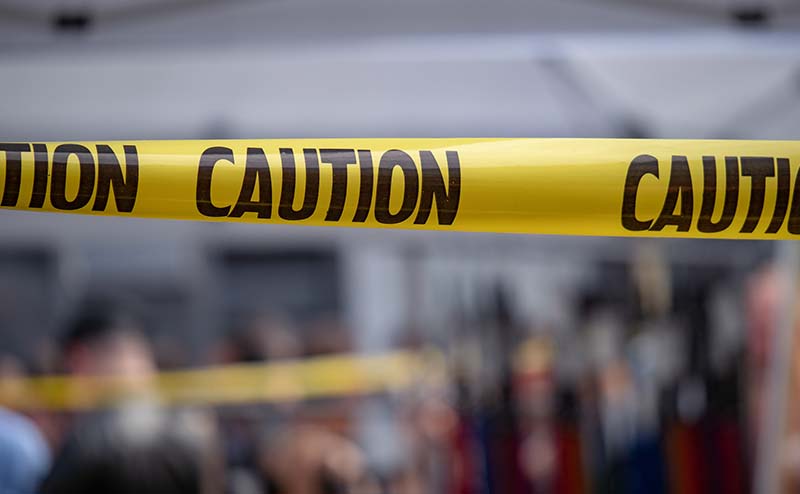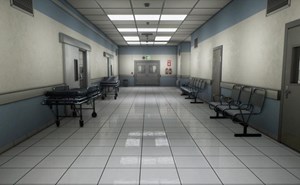An August 2022 ACEP survey shows that violence in the emergency department (ED) is on the rise and is increasing rates of health care worker burnout and harming patient care.
85% of emergency physicians believe the rate of violence experienced in EDs has increased over the past five years, with 45% indicating it has greatly increased.
- Two-thirds of emergency physicians report being assaulted in the past year alone (66%), while more than one-third of respondents say they have been assaulted more than once.
- One-third of emergency physicians who were assaulted resulted in an injury, an increase of 6% since 2018.
- The number of emergency physicians who missed part of or their entire shift has increased by 50% since 2018.
Assaults are on the rise with nearly a quarter (24%) of emergency physicians reporting being assaulted multiple times a week (up from 8% in 2018).
- Patients committed nearly all assaults (98%) against emergency physicians. Additionally, three in ten assaults (31%) were committed by family or friends of the patient being treated.
- The most common types of assaults are as follows:
- Verbal assault, with threats of violence (64%)
- Hits or slaps (40%)
- Spit on (31%)
- Kicked (26%)
- Punched (25%)
Emergency physicians report psychiatric patients and those seeking drugs or under the influence of drugs or alcohol are most often responsible for the assaults experienced (42% and 40%, respectively).
According to emergency physicians, the lack of punitive consequences has become a larger factor in the rise of violence since 2018.
- Many emergency physicians indicated the hospital’s reaction is minimal: escorting the patient off property, restraining the patient, or in many cases, no action at all.
- When administration does get involved, physicians note it is often to de-escalate the situation in a way that appeases the family or patient, and not the physicians or staff.
- The most common response was to make a note in the patient’s chart (29%) and only 2% of hospital security pressed charges.
The full impact of violence against healthcare workers is understated because many incidents are never reported.
- Many health care workers decline or are encouraged not to report assaults for a variety of reasons and leaving most assailants not held accountable.
COVID-19 has had a chilling effect on the levels of violence and trust between patients, physicians and staff.
- Two-thirds of emergency physicians (66%) believe COVID-19 has increased the amount of violence in emergency departments.
- Nearly seven in ten (69%) emergency physicians say that COVID-19 has decreased the level of trust between patients and physicians or emergency department staff.
Nearly nine in ten emergency physicians agree violence in the emergency department harms patient care (89%), a 12-percent increase from a similar survey conducted in 2018.
- More than eight in ten emergency physicians say ED violence has resulted in an increase in wait times (85%).
- 60% of emergency physicians report these attacks often result in patients leaving the emergency department without being seen or treated by a doctor.
Violence in emergency departments is exacerbating the already high rates of health care worker burnout and impacting their mental health.
- 87% of emergency physicians report a loss of productivity from the physician or staff as a result.
- 85% of emergency physicians report emotional trauma and an increase in anxiety because of ED violence.
Emergency physicians and their care teams deserve a support system that prevents these incidents and protects them when they occur.
- The American College of Emergency Physicians (ACEP) and the Emergency Nurses Association have partnered since 2018 on the No Silence on ED Violence campaign to raise awareness, advocate for policy changes, and strengthen protections for frontline workers.
ACEP is addressing these trends and advocating on behalf of emergency physicians and their care teams so they can focus on saving lives, without fearing for their personal safety.
- Physical violence, intimidation and threats are not accepted in any other workplace, and they should not be allowed or tolerated in a health care setting.
- Emergency departments should be a safe space where patients are guaranteed they have the full attention and dedication of their care team to treat their ailments.
ACEP and emergency physicians are calling for a two-pronged policy approach that addresses violence in emergency departments: establishing criminal penalties for assailants and strengthening workplace prevention programs for employees. We strongly encourage legislators to support the bills currently under discussion:
- The “Workplace Violence Prevention Act for Health Care and Social Service Workers,” (S. 4182) introduced by Sen. Tammy Baldwin (D-WI). Its companion (H.R. 1195) in the House of Representatives, introduced by Rep. Joe Courtney (D-CT), passed in a bipartisan vote in April 2021, and now we need the Senate to act.
- This bill calls on the Occupational Safety and Health Administration to issue an enforceable standard requiring health care and social service employers to create and implement workplace violence prevention plans.
- The “Safety from Violence for Healthcare Employees (SAVE) Act,” (H.R. 7961) introduced by Reps. Madeleine Dean (D-PA) and Larry Bucshon, MD (R-IN) awaits consideration by the House Judiciary Committee.
- This bill establishes federal penalties for violence against health care workers, criminalizing intentional assault or intimidation against health care workers while ensuring reasonable protections for individuals who may be mentally incapacitated due to illness or substance use.
- The bill is modeled after protections that exist for aircraft and airport workers, such as flight crews and attendants, whose exposure to violence and assault from unruly passengers has been extensively documented in recent years.
Policymakers have every reason to do all they can to strengthen protections for health care workers.
- Physical violence, intimidation, and threats are not accepted in any other workplace, and they should not be allowed or tolerated in a health care setting.





